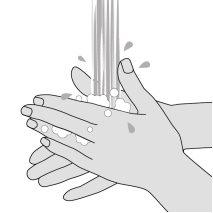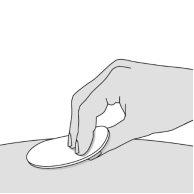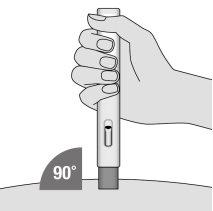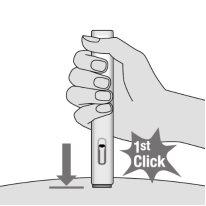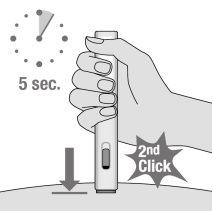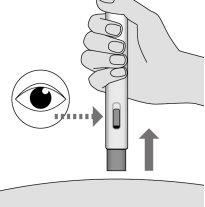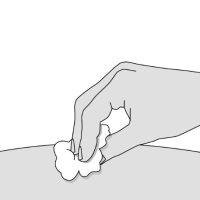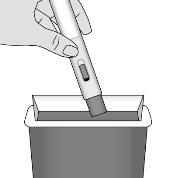

МЕТОДЖЕКТ ПЕН 12,5 мг РОЗЧИН ДЛЯ ІН'ЄКЦІЙ У ПЕРЕДНАПОВНЕНІЙ ШПРИЦ-РУЧЦІ


Інструкція із застосування МЕТОДЖЕКТ ПЕН 12,5 мг РОЗЧИН ДЛЯ ІН'ЄКЦІЙ У ПЕРЕДНАПОВНЕНІЙ ШПРИЦ-РУЧЦІ
Введення
Опис: інформація для користувача
МетоджектПЕН 7,5мг розчин для ін'єкцій у попередньо наповненому ін'єкційному пристрої
МетоджектПЕН 10мг розчин для ін'єкцій у попередньо наповненому ін'єкційному пристрої
МетоджектПЕН 12,5мг розчин для ін'єкцій у попередньо наповненому ін'єкційному пристрої
МетоджектПЕН 15мг розчин для ін'єкцій у попередньо наповненому ін'єкційному пристрої
МетоджектПЕН 17,5мг розчин для ін'єкцій у попередньо наповненому ін'єкційному пристрої
МетоджектПЕН 20мг розчин для ін'єкцій у попередньо наповненому ін'єкційному пристрої
МетоджектПЕН 22,5мг розчин для ін'єкцій у попередньо наповненому ін'єкційному пристрої
МетоджектПЕН 25мг розчин для ін'єкцій у попередньо наповненому ін'єкційному пристрої
МетоджектПЕН 27,5мг розчин для ін'єкцій у попередньо наповненому ін'єкційному пристрої
МетоджектПЕН 30мг розчин для ін'єкцій у попередньо наповненому ін'єкційному пристрої
метотрексат
Перш ніж почати використовувати цей лікарський засіб, уважно прочитайте весь пакет інформації, оскільки він містить важливу інформацію для вас.
- Збережіть цей пакет інформації, оскільки вам може знадобитися знову його прочитати.
- Якщо у вас виникли питання, проконсультуйтеся з вашим лікарем або фармацевтом.
- Цей лікарський засіб призначений тільки вам, і його не слід давати іншим людям, навіть якщо вони мають такі самі симптоми, як і ви, оскільки це може їм нашкодити.
- Якщо ви відчуваєте побічні ефекти, проконсультуйтеся з вашим лікарем або фармацевтом, навіть якщо це можливі побічні ефекти, які не вказані в цьому пакеті інформації. Див. розділ 4.
Зміст пакету інформації
- Що таке Методжект ПЕН і для чого він використовується
- Що вам потрібно знати перед тим, як почати використовувати Методжект ПЕН
- Як використовувати Методжект ПЕН
- Можливі побічні ефекти
- Збереження Методжект ПЕН
- Зміст упаковки та додаткова інформація
1. Що таке Методжект ПЕН і для чого він використовується
Методжект ПЕН призначений для лікування:
- активного ревматоїдного артриту у дорослих пацієнтів,
- поліартритичних форм ювенільного ідіопатичного артриту у дітей та підлітків, якщо відповідь на нестероїдні протизапальні препарати була недостатньою,
- умереного та важкого псоріазу у дорослих пацієнтів, а також псоріатичного артриту у дорослих,
- легкого та середнього захворювання Крона у дорослих пацієнтів, якщо лікування іншими препаратами не є можливим.
Ревматоїдний артрит (РА) - це хронічне захворювання сполучної тканини, яке характеризується запаленням синовіальних оболонок (оболонок суглобів). Ці оболонки виробляють рідину, яка діє як мастило у багатьох суглобах. Запалення призводить до потовщення оболонки та набухання суглоба.
Ювенільний артрит уражає дітей та підлітків молодше 16 років. Поліартритичні форми вказані, якщо є ураження 5 або більше суглобів у перші 6 місяців захворювання.
Псоріаз - це хронічне та часте захворювання шкіри, яке характеризується червоними плямами, покритими товстими, сухими, сріблястими та прилеглими лусками.
Псоріатичний артрит - це тип артриту з псоріатичними ураженнями шкіри та нігтів, особливо у суглобах пальців рук та ніг.
Методжект ПЕН змінює та сповільнює розвиток захворювання.
Захворювання Крона - це тип запального захворювання кишечника, яке може уражати будь-яку частину травної системи, викликаючи симптоми, такі як біль у животі, діарея, блювота або втрату ваги.
2. Що вам потрібно знати перед тим, як почати використовувати Методжект ПЕН
Не використовуйте Методжект ПЕН
- якщо ви алергічні на метотрексат або будь-який інший компонент цього лікарського засобу (перелічені в розділі 6),
- якщо у вас є важке захворювання печінки або нирок чи захворювання крові,
- якщо ви регулярно вживаєте великі кількості алкоголю,
- якщо у вас є важка інфекція, така як туберкульоз, ВІЛ чи інші синдроми імунодефіциту,
- якщо у вас є виразки у роті, виразка шлунка чи виразка кишечника,
- якщо ви вагітні або годуєте грудьми (див. розділ «Вагітність, годування грудьми та фертильність»),
- якщо ви отримуєте вакцини, виготовлені з ослабленими мікроорганізмами.
Попередження та обережність
Проконсультуйтеся з вашим лікарем або фармацевтом перед тим, як почати приймати Методжект ПЕН
- якщо вам більше 65 років або ви загалом відчуваєте нездоров'я та слабкість,
- якщо у вас є проблеми з функцією печінки,
- якщо у вас є проблеми з дефіцитом рідини (втрата рідини).
- якщо у вас є цукровий діабет та ви приймаєте інсулін.
Особливі заходи обережності для лікування Методжект ПЕН
Метотрексат тимчасово впливає на вироблення сперматозоїдів та яйцеклітин, що є оборотнім у більшості випадків. Метотрексат може викликати викидні та важкі вади розвитку плода. Якщо ви жінка, вам слід уникати вагітності під час прийому метотрексату та протягом至少 6 місяців після закінчення лікування. Якщо ви чоловік, вам слід уникати зачаття дитини під час прийому метотрексату та протягом至少 3 місяців після закінчення лікування. Див. також розділ «Вагітність, годування грудьми та фертильність».
Тести контролю та заходи обережності
Навіть якщо метотрексат використовується у низьких дозах, можуть виникнути важкі побічні ефекти. Для того, щоб виявити їх учасно, ваш лікар повинен проводити огляди та аналізи контролю.
Перед початком лікування
Перед початком лікування вам будуть проведені аналізи крові для перевірки наявності достатньої кількості клітин крові. Також будуть проведені аналізи крові для перевірки функції печінки та наявності гепатиту. Крім того, будуть контролюватися рівень альбуміну в крові, стан гепатиту (інфекції печінки) та функція нирок. Лікар також може вирішити провести інші тести печінки; деякі з них можуть включати зображення печінки, а інші можуть потребувати взяття малої кількості тканини печінки для детального вивчення. Ваш лікар також може перевірити наявність туберкульозу, а також може бути проведена рентгенографія грудної клітки або тест функції легенів.
Під час лікування
Ваш лікар може проводити наступні огляди:
- Огляд порожнини рота та горла для виявлення змін у слизових оболонках, таких як запалення або виразки.
- Аналізи крові/рахунок крові з кількістю клітин крові та вимірювання рівня метотрексату в крові.
- Аналізи крові для контролю функції печінки.
- Тести зображення для контролю функції печінки.
- Взяття малої кількості тканини печінки для детального вивчення.
- Аналізи крові для контролю функції нирок.
- Контроль дихальної системи та, якщо необхідно, тест функції легенів.
Це дуже важливо, щоб ви проходили ці заплановані огляди.
Якщо результати будь-якого з цих тестів будуть несприятливими, ваш лікар коригуватиме лікування відповідно.
Пацієнти похилого віку
Пацієнти похилого віку, які приймають метотрексат, повинні бути під щільним спостереженням лікаря для того, щоб виявити можливі побічні ефекти якомога раніше.
Погіршення функції печінки та нирок, пов'язане з віком, та низькі резерви вітаміну фолієвої кислоти в похилому віці вимагають відносно низької дози метотрексату.
Інші заходи обережності
Відповідно до даних метотрексату, було повідомлено про гостру пульмональну кровотечу у пацієнтів з ревматологічним захворюванням. Якщо ви спостерігаєте кров у мокроті або кашлі, ви повинні негайно звернутися до вашого лікаря.
Метотрексат може впливати на імунну систему та результати вакцинації. Він також може впливати на результати імунологічних тестів. Він може реактивувати хронічні інфекції (такі як герпес зостер, туберкульоз, гепатит Б або С). Під час лікування Методжект ПЕН не слід приймати вакцини, виготовлені з ослабленими мікроорганізмами.
Метотрексат може зробити шкіру більш чутливою до сонячного світла. Уникайте інтенсивного сонця та не використовуйте сонячні лампи без консультації з лікарем. Для захисту шкіри від інтенсивного сонця носіть відповідний одяг або використовуйте сонячний засіб з високим фактором захисту.
Під час лікування метотрексатом можуть повторюватися дерматити, індуковані радіацією, та сонячні опіки (реакції пам'яті). Псоріатичні ураження можуть посилюватися під час ультрафіолетового опромінення та одночасного прийому метотрексату.
Може виникнути збільшення розміру лімфатичних вузлів (лімфома) та, в такому випадку, лікування повинно бути припинено.
Діарея може бути побічним ефектом Методжект ПЕН та вимагає припинення лікування. Якщо у вас є діарея, проконсультуйтеся з вашим лікарем.
Було повідомлено про певні порушення мозкової діяльності (енцефалопатія/леукоенцефалопатія) у пацієнтів з раком, які приймають метотрексат. Не можна виключити можливість появи цих побічних ефектів, коли метотрексат використовується для лікування інших захворювань.
Якщо ви, ваш партнер або ваш опікун помітили появу або погіршення нейрологічних симптомів, таких як загальна слабкість м'язів, порушення зору, зміни у мисленні, пам'яті та орієнтації, які викликають плутаність та зміни особистості, негайно зверніться до вашого лікаря, оскільки ці можуть бути симптомами рідкісного та важкого захворювання мозку, яке називається прогресивна мультифокальна лейкоенцефалопатія (ПМЛ).
Використання Методжект ПЕН з іншими лікарськими засобами
Повідомте вашого лікаря або фармацевта, якщо ви приймаєте, нещодавно приймали або можете приймати будь-який інший лікарський засіб. Уважно прочитайте цю інформацію, включаючи лікарські засоби, які ви можете приймати в майбутньому.
Ефект лікування може бути порушений, якщо Методжект ПЕН застосовується одночасно з певними лікарськими засобами:
- Антибіотики, такі як тетрацикліни, хлорамфенікол, неабсорбувані антибіотики широкого спектру дії, пеніциліни, глікопептиди, сульфонаміди, ципрофлоксацин та цефалотин (лікарські засоби для профілактики або лікування певних інфекцій).
- Протизапальні засоби нестероїдної природи або саліцилати (лікарські засоби для лікування болю або запалення, такі як ацетилсаліцилова кислота, диклофенак або ібупрофен чи піразолони).
- Метамізол (син. новамінсульфон та дипірон) (лікарський засіб для лікування сильного болю та/або лихоманки).
- Пробенецид (лікарський засіб для лікування подагри).
- Слабкі органічні кислоти, такі як діуретики петлевої дії.
- Лікарські засоби, які можуть викликати побічні ефекти у кістковому мозку, такі як триметоприм-сульфаметоксазол (антибіотик) та піріметамін.
- Інші лікарські засоби, які використовуються для лікування ревматоїдного артриту, такі як лефлуномід, сульфасалазін та азатіоприн.
- Циклоспорин (для пригнічення імунної системи).
- Меркаптопурин (цитостатичний лікарський засіб).
- Ретіноїди (лікарські засоби для лікування псоріазу та інших захворювань шкіри).
- Теофілін (лікарський засіб для лікування бронхіальної астми та інших захворювань легенів).
- Деякі лікарські засоби для лікування захворювань шлунка, такі як омепразол та пантопразол.
- Гіпоглікемічні лікарські засоби (лікарські засоби, які використовуються для зниження рівня цукру в крові).
Вітаміни, які містять фолієву кислоту, можуть змінити ефект вашого лікування та прийматися тільки за рекомендацією вашого лікаря.
Слід уникати вакцинації вакцинами, виготовленими з ослабленими мікроорганізмами.
Використання Методжект ПЕН з харчовими продуктами, напоями та алкоголем
Під час лікування Методжект ПЕН слід уникати вживання алкоголю, а також великих кількостей кави, газованих напоїв, які містять кофеїн, та чорного чаю.
Вагітність, годування грудьми та фертильність
Вагітність
Не використовуйте Методжект ПЕН під час вагітності або якщо ви намагаєтеся завагітніти. Метотрексат може викликати вади розвитку плода, пошкодити плід або викликати викидні. Він асоціюється з малформаціями черепа, обличчя, серця та судин, мозку та кінцівок. Тому дуже важливо, щоб метотрексат не застосовувався у вагітних пацієнтів або тих, хто планує завагітніти.
У жінок фертильного віку слід виключити будь-яку можливість вагітності за допомогою відповідних заходів, наприклад, тесту на вагітність перед початком лікування.
Ви повинні уникати вагітності під час прийому метотрексату та протягом至少 6 місяців після закінчення лікування, використовуючи для цього надійні методи контрацепції протягом усього цього часу (див. також розділ «Попередження та обережність»).
Якщо ви завагітніли під час лікування або підозрюєте, що можете бути вагітною, негайно зверніться до вашого лікаря. Вам буде надана інформація про ризик шкідливих ефектів для дитини під час лікування.
Якщо ви бажаєте завагітніти, проконсультуйтеся з вашим лікарем, який може направити вас до спеціаліста для консультації перед початком лікування.
Годування грудьми
Припиніть годування грудьми перед та під час лікування Методжект ПЕН.
Чоловіча фертильність
Доступні дані не вказують на підвищений ризик малформацій чи викиднів, якщо батько приймає дозу метотрексату нижчу за 30 мг/тиждень. Однак цей ризик не можна повністю виключити. Метотрексат може бути генотоксичним, тобто能够 викликати генетичні мутації. Метотрексат може впливати на вироблення сперматозоїдів та викликати вади розвитку плода. Тому ви повинні уникати зачаття дитини під час прийому метотрексату та протягом至少 3 місяців після закінчення лікування.
Водіння транспортних засобів та використання машин
Лікування Методжект ПЕН може викликати побічні ефекти, які впливають на центральну нервову систему, такі як втома та головокружіння. Тому ваша здатність водити транспортні засоби чи використовувати машини може бути порушена в деяких випадках. Якщо ви відчуваєте втому чи сонливість, не слід водити транспортні засоби чи використовувати машини.
Методжект ПЕН містить натрій
Цей лікарський засіб містить менше 1 ммоль натрію (23 мг) на дозу;це означає, що він практично не містить натрію.
3. Як використовувати Metoject PEN
Важливе попередження щодо дозуванняMetojectPEN (метотрексат):
Використовуйте Metoject PEN тільки один раз на тижденьдля лікування ревматоїдного артриту, ювенільного ідіопатичного артриту, псоріазу та псоріатичного артриту і хвороби Крона. Надмірне використання Metoject PEN (метотрексат) може бути смертельним. Прочитайте розділ 3 цього листка з великою увагою. Якщо у вас виникли питання, проконсультуйтеся з вашим лікарем або фармацевтом перед використанням цього препарату.
Слідуйте точно інструкціям щодо застосування цього препарату, вказаним вашим лікарем. У разі сумнівів проконсультуйтеся знову з вашим лікарем або фармацевтом.
Ваш лікар визначить дозу, яка буде індивідуально коригуватися. Зазвичай, лікування триває від 4 до 8 тижнів.
Ін'єкція Metoject PEN вводиться підшкірно (під шкіру) під наглядом лікаря або медичного працівника тільки один раз на тиждень. Разом з вашим лікарем ви оберете день тижня, який буде вам підходити для введення ін'єкції.
Використання у дітей та підлітків
Лікар вирішує, яка доза підходить для дітей та підлітків з поліартритичними формами ювенільного ідіопатичного артриту.
MetojectPEN не рекомендується для використання у дітей молодше 3 роківчерез обмежений досвід використання у цій віковій групі.
Тривалість та спосіб застосування
Мetoject PEN вводиться один раз на тиждень!
Лікар, який спостерігає за вами, вирішить тривалість лікування. Лікування ревматоїдного артриту, ювенільного ідіопатичного артриту, псоріазу, псоріатичного артриту та хвороби Крона препаратом Metoject PEN є довгостроковим лікуванням.
На початку лікування Metoject PEN може бути введений медичним працівником. Однак ваш лікар може вирішити, що ви можете навчитися самостійно вводити Metoject PEN. Ви отримаєте відповідну підготовку для цього.
У жодному разі не намагайтесь вводити собі ін'єкцію самостійно, якщо вам не було показано, як це робити.
Прочитайте «Інструкції з використання» в кінці цього листка, щоб знайти керівництво щодо правильного використання Metoject PEN.
Зверніть увагу, що потрібно використовувати весь вміст.
Спосіб обробки та утилізації препарату та попередньо заповненої голки здійснюється згідно з місцевими правилами. Медичний персонал, який перебуває у стані вагітності, не повинен обробляти та вводити Metoject PEN.
Метотрексат не повинен вступати в контакт зі шкірою або слизовими оболонками. Якщо це відбувається, потрібно негайно промити постраждалу область великою кількістю води.
Якщо ви використали більше MetojectPEN, ніж потрібно
Якщо ви використали більше Metoject PEN, ніж потрібно, негайно проконсультуйтеся з вашим лікарем.
Якщо ви підозрюєте, що ви (або хтось інший) ввели надмірну кількість Metoject PEN, негайно зверніться до вашого лікаря або до найближчої лікарні або проконсультуйтеся з Токсикологічною інформаційною службою, телефон 91 562 04 20. Вони вирішать, які заходи потрібно вжити залежно від ступеня отруєння. Возьміть препарат з собою, якщо ви звертаєтеся до лікаря або лікарні.
Якщо ви забули використати MetojectPEN
Не використовуйте подвійну дозу для компенсації пропущених доз.
Якщо ви припинили лікування MetojectPEN
Якщо ви припинили лікування Metoject PEN, негайно проконсультуйтеся з вашим лікарем.
Якщо у вас є відчуття, що дія Metoject PEN є надто сильною або надто слабкою, проконсультуйтеся з вашим лікарем або фармацевтом.
4. Можливі побічні ефекти
Як і всі препарати, цей препарат може викликати побічні ефекти, хоча не всі люди їх відчувають.
Частота та ступінь тяжкості побічних ефектів залежатимуть від дози та частоти застосування. важливо, щоб лікар регулярно проводив огляди, оскільки можуть виникнути серйозні побічні ефекти навіть при низьких дозах. Ваш лікар проведе тести для виявлення аномалійу крові (як низький рівень лейкоцитів, низький рівень тромбоцитів або лімфома) та порушення функції нирок та печінки.
Якщо ви відчуваєте будь-які з наступних симптомів, незгодно проконсультуйтеся з вашим лікарем, оскільки вони можуть свідчити про серйозний побічний ефект, який потребує термінового лікування:
- Сухий кашель, що триває, без мокроти, труднощі з диханням та гарячка; можуть бути ознаками запалення легенів [часто]
- Кровотеча при кашлі або блювоті; можуть бути ознаками легеневого кровотечі [частота невідома]
- Симптоми пошкодження печінки, такі як жовтяниця шкіри або білка очей; метотрексат може викликати хронічне пошкодження печінки (цироз печінки), утворення рубцевої тканини в печінці (фіброз печінки), жирову дегенерацію печінки [всі рідко], гостре запалення печінки (гепатит) [рідко] та недостатність печінки [дуже рідко]
- Алергічні симптоми, такі як висипання на шкірі, включаючи свербіж шкіри, набряк рук, ніг, щиколоток, обличчя, губ, рота або горла (що може викликати труднощі з ковтанням або диханням) та відчуття передсинкопу;ці можуть бути ознаками серйозних алергічних реакцій або анафілактичного шоку [рідко]
- Симптоми пошкодження нирок, такі як набряк рук, ніг або щиколоток або зміни частоти сечовипускання чи зменшення (олігурія) чи відсутність (анурія) сечі;ці можуть бути ознаками ниркової недостатності [рідко]
- Симптоми інфекцій, наприклад, гарячка, озноб, болі, біль у горлі;метотрексат може зробити вас більш схильними до інфекцій. Можуть виникнути серйозні інфекції, такі як певний тип пневмонії (пневмонія, викликана Pneumocystis jirovecii) або сепсис [рідко]
- Симптоми, такі як слабкість у одному боці тіла (інсульт) або біль, набряк, червоність та незвичайне тепло в одній з ніг (глибока венозна тромбоз);це може статися, коли відірваний кров'яний згусток викликає обструкцію кров'яного судини(тромбоемболічна подія) [рідко]
- Гарячка та сильне погіршення загального стану, або раптова гарячка, що супроводжується болем у горлі або роті, або проблемами з сечовипусканням; метотрексат може викликати раптове зниження кількості певних білих кров'яних тілок (агранулоцитоз) та сильну міелосупресію [дуже рідко]
- Незвичайне кровотеча, наприклад, кровотеча десен, кров у сечі, блювота з кров'ю чи гематоми,ці можуть бути ознаками сильного зниження кількості тромбоцитів, викликаного серйозними епізодами депресії кісткового мозку [дуже рідко]
- Симптоми, такі як сильний головний біль, часто в поєднанні з гарячкою, жорсткістю шиї, нудотою, блювотою, дезорієнтацією та чутливістю до світламожуть свідчити про запалення оболонок мозку (асептичний менінгіт) [дуже рідко]
- відзначені певні порушення мозку (енцефалопатія/леукоенцефалопатія) у пацієнтів з раком, які лікувалися метотрексатом; ці побічні ефекти не можуть бути виключені, коли лікування метотрексатом використовується для лікування інших захворювань; ознаки цих порушень мозку можуть бути змінами психічного стану,порушеннями руху (атаксія), порушеннями зору чи порушеннями пам'яті[частота невідома]
- Важке висипання на шкірі чи утворення пухирів на шкірі (це також може впливати на рот, очі та геніталії); ці можуть бути ознаками стану, званого синдромом Стівенса-Джонсона або синдромом опіки шкіри (токсична епідермальна некроліз/синдром Лаєлла) [дуже рідко]
Наступні побічні ефекти також можуть виникнути:
Дуже часті:можуть впливати на більше 1 з 10 осіб
- Запалення слизової оболонки рота, диспепсія, нудота, зниження апетиту, біль у животі.
- Аномальні результати тестів на функцію печінки (АСАТ, АЛАТ, білірубін, алкалічна фосфатаза).
Часті:можуть впливати до 1 з 10 осіб
- Висипання на слизовій оболонці рота, діарея.
- Висипання, червоність шкіри, свербіж.
- Головний біль, втома, сонливість.
- Зниження утворення кров'яних клітин із зниженням кількості білих кров'яних тілок, червоних кров'яних тілок або тромбоцитів.
Рідкі:можуть впливати до 1 з 100 осіб
- Запалення горла.
- Запалення кишечника, блювота, запалення підшлункової залози, чорний або дегтелистий кал, виразки шлунково-кишкового тракту та кровотеча.
- Реакції, подібні до опіків від сонця, через підвищену чутливість шкіри до сонячного світла, випадіння волосся, збільшення кількості ревматичних вузлів, виразки на шкірі, герпес зостер, запалення кров'яних судин, висипання, подібне до герпесу, кропив'янка.
- Виникнення цукрового діабету.
- Головокружіння, сплутаність свідомості, депресія.
- Зниження рівня альбуміну в крові.
- Зниження кількості всіх кров'яних клітин та тромбоцитів.
- Запалення та виразки сечового міхура чи вагіни, зниження функції нирок, порушення сечовипускання.
- Біль у суглобах, біль у м'язах, зменшення маси кісток.
Дуже рідкі:можуть впливати до 1 з 1 000 осіб
- Запалення тканини ясен.
- Збільшення пігментації шкіри, акне, синяки на шкірі через кровотечу з судин (екхімози, петехії), алергічна реакція кров'яних судин.
- Зниження кількості антитіл у крові.
- Інфекція (включаючи реактивацію хронічних інактивованих інфекцій), кон'юнктивіт.
- Зміни настрою (зміни настрою).
- Порушення зору.
- Запалення сумки навколо серця, нагромадження рідини в сумці навколо серця, обструкція наповнення серця через наявність рідини в сумці, яка оточує серце.
- Низький артеріальний тиск.
- Утворення рубцевої тканини в легенях (фіброз легенів), труднощі з диханням та бронхіальна астма, нагромадження рідини в сумці, яка оточує легені.
- Перелом кісток через надмірне навантаження.
- Порушення електролітного балансу.
- Гарячка, порушення загоєння ран.
Дуже рідкі:можуть впливати до 1 з 10 000 осіб
- Токсична розширення та гостра дилатація кишечника (токсичний мегаколон).
- Збільшення пігментації нігтів, запалення кутикул (острую пароніхію), глибока інфекція волосяних фолікулів (фуронкулом), збільшення видимих дрібних кров'яних судин.
- Біль, втрата сили чи відчуття оніміння чи поколювання/чутливості меншої за норму, порушення смаку (металічний смак), судоми, параліч, менінгізм.
- Порушення зору, неінфламаторне захворювання очей (ретинопатія).
- Втрата статевого потягу, імпотенція, збільшення молочних залоз у чоловіків, порушення утворення сперми (олігоспермія), порушення менструації, вагінальні виділення.
- Збільшення розміру лімфатичних вузлів (лімфома).
- Лімфопроліферативні порушення (надмірне збільшення білих кров'яних тілок).
Частота невідома:не може бути оцінена на основі доступних даних
- Збільшення кількості певних білих кров'яних тілок.
- Носова кровотеча.
- Білок у сечі.
- Чуття слабкості.
- Пошкодження кісток щелепи (вторинне до надмірного збільшення білих кров'яних тілок).
- Пошкодження тканини в місці ін'єкції.
- Червоність та лущення шкіри.
- Набряк.
Підшкірне введення метотрексату загалом добре переноситься місцево. Відзначалися лише легкі місцеві реакції шкіри (такі як відчуття паління, еритема, набряк, зміна кольору, сильний свербіж, біль), які зменшувалися під час лікування.
Повідомлення про побічні ефекти
Якщо ви відчуваєте будь-який побічний ефект, проконсультуйтеся з вашим лікарем або фармацевтом, навіть якщо це можливі побічні ефекти, які не наведені в цьому листку. Ви також можете повідомити про них безпосередньо через Систему фармакологічного нагляду за лікарськими засобами для людини: www.notificaRAM.es. Надсилаючи повідомлення про побічні ефекти, ви можете допомогти надати більше інформації про безпеку цього препарату.
5. Зберігання Metoject PEN
Тримайте цей препарат поза зоною видимості та досягнення дітей.
Зберігайте при температурі нижче 25 °C. Не заморожуйте.
Зберігайте попередньо заповнені голки в зовнішній упаковці для захисту їх від світла.
Не використовуйте цей препарат після закінчення терміну придатності, вказаного на коробці та на попередньо заповненій голці після CAD. Термін придатності — останній день місяця, який вказано.
Лікарські засоби не повинні викидати в каналізацію чи сміття. Відкладайте контейнери та лікарські засоби, які вам не потрібні, в пункті збору фармацевтичного відходу в аптеці. У разі сумнівів запитайте в вашого фармацевта, як позбутися контейнерів та лікарських засобів, які вам не потрібні. Таким чином, ви допоможете захистити навколишнє середовище.
6. Зміст упаковки та додаткова інформація
Склад МетоджектПЕН
- Активний інгредієнт - метотрексат.
1 предзавантажена ручка з 0,15 мл розчину містить 7,5 мг метотрексату.
1 предзавантажена ручка з 0,2 мл розчину містить 10 мг метотрексату.
1 предзавантажена ручка з 0,25 мл розчину містить 12,5 мг метотрексату.
1 предзавантажена ручка з 0,3 мл розчину містить 15 мг метотрексату.
1 предзавантажена ручка з 0,35 мл розчину містить 17,5 мг метотрексату.
1 предзавантажена ручка з 0,4 мл розчину містить 20 мг метотрексату.
1 предзавантажена ручка з 0,45 мл розчину містить 22,5 мг метотрексату.
1 предзавантажена ручка з 0,5 мл розчину містить 25 мг метотрексату.
1 предзавантажена ручка з 0,55 мл розчину містить 27,5 мг метотрексату.
1 предзавантажена ручка з 0,6 мл розчину містить 30 мг метотрексату.
- Інші компоненти - хлорид натрію, гідроксид натрію та хлоридна кислота для регулювання pH та вода для ін'єкційних препаратів.
Вигляд продукту та вміст упаковки
Цей лікарський засіб представлений у вигляді ін'єкційного розчину в предзавантаженій ручці.
Розчин прозорий жовто-коричневий.
<Для упаковок, що містять ручки BD лише>
Предзавантажена ручка Методжект ПЕН - це триступінчатий автоін'єктор з жовтою кришкою та жовтим кнопком ін'єкції.
<Для упаковок, що містять ручки YpsoMate лише>
Предзавантажена ручка Методжект ПЕН - це двоступінчатий автоін'єктор з прозорим ковпачком та синім захисним кожухом для голки.
Випускаються наступні розміри упаковок:
Методжект ПЕН доступний в упаковках по 1, 2, 4, 5, 6, 10, 11, 12, 14, 15 та 24 предзавантажених ручок.
Можливо, що деякі розміри упаковок не випускаються.
Уповноважений на отримання дозволу на розміщення лікарського засобу на ринку та відповідальний за виробництво
medac Gesellschaft für klinische Spezialpräparate mbH
Theaterstr. 6
22880 Wedel
Німеччина
Тел.: +49 4103 8006-0
Факс: +49 4103 8006-100
Для отримання додаткової інформації щодо цього лікарського засобу зверніться до місцевого представника уповноваженого на отримання дозволу на розміщення лікарського засобу на ринку:
Лабораторії Gebro Pharma, S.A.
Avenida Tibidabo n° 29
08022 Барселона
Іспанія
Тел. +34 93 205 86 86
Цей лікарський засіб дозволений в державах-членах Європейського економічного просторута у Великій Британії (Північна Ірландія)під наступними назвами:
Австрія, Словаччина, Словенія, Іспанія, Фінляндія, Греція, Угорщина, Нідерланди, Велика Британія (Північна Ірландія), Чехія:
Методжект ПЕН
Ісландія, Швеція: Методжектпен
Німеччина: метекс ПЕН
Естонія, Латвія, Литва, Норвегія: Метекс
Польща, Португалія:
Метекс ПЕН
Данія:
Метекс Пен
Бельгія:
Методжект
Дата останнього перегляду цього листка:серпень2024.
Детальна та актуальна інформація про цей лікарський засіб доступна на сайті Агентства лікарських засобів та медичних продуктів Іспанії (AEMPS) http://www.aemps.gob.es
Ви можете отримати детальну та актуальну інформацію про те, як застосовувати цей лікарський засіб, скануючи код QR на упаковці за допомогою свого мобільного телефону (смартфона). Також ви можете отримати цю інформацію на наступних інтернет-адресах:
Методжект ПЕН 7,5 мг ін'єкційний розчин у предзавантаженій ручці:
https://cima.aemps.es/info/78639
Методжект ПЕН 10 мг ін'єкційний розчин у предзавантаженій ручці:
https://cima.aemps.es/info/78632
Методжект ПЕН 12,5 мг ін'єкційний розчин у предзавантаженій ручці:
https://cima.aemps.es/info/78633
Методжект ПЕН 15 мг ін'єкційний розчин у предзавантаженій ручці:
https://cima.aemps.es/info/78634
Методжект ПЕН 17,5 мг ін'єкційний розчин у предзавантаженій ручці:
https://cima.aemps.es/info/78704
Методжект ПЕН 20 мг ін'єкційний розчин у предзавантаженій ручці:
https://cima.aemps.es/info/78638
Методжект ПЕН 22,5 мг ін'єкційний розчин у предзавантаженій ручці:
https://cima.aemps.es/info/78635
Методжект ПЕН 25 мг ін'єкційний розчин у предзавантаженій ручці:
https://cima.aemps.es/info/78636
Методжект ПЕН 27,5 мг ін'єкційний розчин у предзавантаженій ручці:
https://cima.aemps.es/info/78637
Методжект ПЕН 30 мг ін'єкційний розчин у предзавантаженій ручці:
https://cima.aemps.es/info/78631
<Для упаковок, що містять ручки BD лише>
Інструкції з використання
Рекомендації
- Вважно прочитайте наступні інструкції перед тим, як почати ін'єкцію.
- Завжди використовуйте техніку ін'єкції, яку порадив ваш лікар, фармацевт або медсестра.
Додаткова інформація
Спосіб обробки та утилізації лікарського засобу та предзавантаженої ручки здійснюється згідно з місцевими правилами. Санітарний персонал, який перебуває у стані вагітності, не повинен обробляти та застосовувати Методжект ПЕН.
Метотрексат не повинен вступати в контакт з поверхнею шкіри або слизовими оболонками. Якщо він вступає в контакт, необхідно негайно промити уражену область великою кількістю води.
Компоненти предзавантаженої ручки МетоджектПЕН | |
| Кнопка ін'єкції Зона обробки Прозора зона контролю Кришка |
|
|
Що потрібно зробити перед ін'єкцією
| |
| Якщо предзавантажена ручка Методжект ПЕН здається пошкодженою, не застосовуйте її. Використайте іншу ручку та зверніться до вашого лікаря, фармацевта або медсестри. Якщо є мала повітряна бульбашка, видима через прозору зону контролю, це не вплине на вашу дозу та не завдасть вам шкоди. Якщо ви не можете побачити або переглянути систему правильно перед ін'єкцією, попросіть когось з вашого оточення допомогти вам. |
|
Де потрібно робити ін'єкцію | |
| Найбільш підходящими місцями для ін'єкції є:
|
Як підготувати ін'єкцію
|
|
| |
Примітка: після видалення кришки зробіть ін'єкцію без затримки. | |
|
|
|
|
Як зробити ін'єкцію: | |
|
|
Примітка: Не видаліть предзавантажену ручку Методжект ПЕН з шкіри до кінця ін'єкції, щоб уникнути незавершеної ін'єкції. Якщо ін'єкція не спрацювала, звільніть кнопку, переконайтесь, що предзавантажена ручка Методжект ПЕН твердо натиснута проти шкіри та сильно натисніть кнопку. Якщо у вас є проблеми зі слухом, підрахуйте 5 секунд з моменту натиснення кнопки, а потім підніміть предзавантажену ручку Методжект ПЕН з місця ін'єкції. | |
|
Перед тим, як викинути предзавантажену ручку Методжект ПЕН, візуально перевірте, чи не залишилося рідини в ручці, в нижній частині прозорої зони контролю. Якщо залишилося деяка кількість рідини в ручці, це означає, що лікарський засіб не був введений правильно та повністю, і вам потрібно звернутися до вашого лікаря. |
Примітка
Щоб уникнути будь-якої травми, ніколи не вводьте пальці в отвір захисного трубки, що покриває голку. Не руйнуюйте ручку.
З ким потрібно зв'язатися у разі потреби
- Якщо у вас є будь-які питання або проблеми, зверніться до вашого лікаря, фармацевта або медсестри.
Якщо ви або хтось з вашого оточення отримав травму голкою, зверніться до вашого лікаря негайно та викиньте предзавантажену ручку Методжект ПЕН.
<Для упаковок, що містять ручки YpsoMate лише>
ІНСТРУКЦІЇ З ВИКОРИСТАННЯ
Наступні "Інструкції з використання" містять інформацію про те, як вводити ін'єкцію предзавантаженою ручкою Методжект ПЕН.
Прочитайте ці "Інструкції з використання" до кінця перед тим, як використовувати предзавантажену ручку для підшкірної ін'єкції. Прочитайте "Інструкції з використання" кожен раз, коли ви отримуєте новий рецепт та збережіть їх для можливого подальшого перегляду після ін'єкції.
Кожен раз, коли ви отримуєте новий лікарський засіб або іншу дозу лікарського засобу, завжди переконайтесь, що він відповідає тому, що призначив ваш лікар. Перед тим, як почати використовувати ручку, медичний працівник покаже вам або вашому опікунові, як правильно її використовувати.
Невикористовуйте ручку, якщо медичний працівник не показав вам, як це зробити. Якщо у вас або вашого опікуна є будь-які питання, зверніться до медичного працівника.
Важлива інформація, яку потрібно знати перед здійсненням ін'єкції предзавантаженою ручкою МетоджектПЕН |
Зробіть ін'єкцію предзавантаженою ручкою МетоджектПЕН один раз на тиждень лише та завжди в один і той же день тижня. Не робіть ін'єкцію та не обробляйте продукт, якщо ви вагітні.
Невидаліть ковпачок до моменту ін'єкції. Неділіться ручкою з іншими людьми. Невикористовуйте ручку, якщо:
У разі сумнівів зверніться до медичного працівника. |
Зберігання предзавантаженої ручки МетоджектПЕН
- Зберігайте при температурі нижче 25 °C.
- Перевозьте та зберігайте ручку в зовнішній упаковці, щоб захистити її від світла.
- Зберігайте ручку в безпечному місці, поза зоною видимості та доступу дітей.
Незаморожуйте.
Незберігайте при температурі вище 25 °C.
Предзавантажена ручка МетоджектПЕН (ФігураА)
Предзавантажена ручка Методжект ПЕН - це одноразовий автоін'єктор з фіксованою дозою. Вона доступна в 10 різних дозах, що варіюються від 7,5 мг до 30 мг.
До використання | Після використання | ||
Ковпачок (прозорий) Вікно інспекції (лікарський засіб жовто-прозорий знаходиться всередині) Поршень (позиція варіюється залежно від призначеної дози)
7,5 мг 15 мг 30 мг (доза прикладу) Зона кольорового коду(індивідуальна для кожної дози) |
|
| Захисний кожух для голки
Ковпачок (захисний кожух для голки знаходиться всередині) Синій поршень (показує, що ін'єкція завершена) Маркування продукту (для перевірки дози та дати закінчення терміну зберігання) |
ФігураА
Матеріал, необхідний для ін'єкції (ФігураБ)
У день тижневої ін'єкції знайдіть зручне місце та переконайтесь, що область добре освітлена та що у вас є плоска та чиста поверхня (наприклад, стіл) для розміщення всього необхідного матеріалу для ін'єкції.
Вам знадобиться:
- предзавантажена ручка Методжект ПЕН.
Переконайтесь, що у вас є наступні додаткові матеріали для введення ін'єкції, оскільки вони не входять до складу упаковки:
- ваш календар для перевірки дня тижневої ін'єкції,
- засіб для очищення шкіри, такий як антисептичний засіб з алкоголем; якщо у вас його немає, ви можете використовувати воду та миль,
- ватна торunda або гасу для обробки місця ін'єкції,
- контейнер для утилізації медичного матеріалу згідно з місцевими правилами.
| ||||
Календар, що показує день тижневої ін'єкції | Предзавантажена ручка Методжект ПЕН | Засіб для очищення шкіри | Ватна торунда або гасу | Контейнер для утилізації медичного матеріалу |
ФігураБ
Підготовка до ін'єкції | |
Невидаліть ковпачок до моменту ін'єкції. |
ФігураС |
- Перевірте термін придатності, зазначений на етикетці пігулки.
- Не використовуйте пігулку, якщо вона просрочена.
- Осмотріть лікарський засіб через вікно огляду, перевернувши його догори дном або потрусивши його м'яко. Лікарський засіб всередині пігулки повинен бути прозорим і жовтим.
- Не вводьте ін'єкцію, якщо розчин є мутним, дезорієнтованим або містить частинки.
- Ви можете побачити одну або кілька повітряних бульбашок. Це нормально. Не намагайтесь їх видалити.
- Ви можете побачити шкалу на вікні; нехтуйте нею.
- Переконайтесь, що пігулка не пошкоджена і що ковпачок щільно закріплений. Не використовуйте пігулку, якщо вона здається пошкодженою або якщо ковпачок знятий або не щільно прикріплений.
Якщо пігулка просрочена, здається пошкодженою або не має очікуваного вигляду, не використовуйте її і зверніться до медичного працівника.
Акуратно покладіть пігулку на рівну чисту поверхню (наприклад, стіл) перед виконанням наступних кроків.
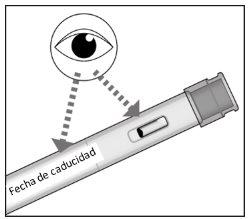
ФігураД
- Виберіть місце введення ін'єкції (Фігура Є)
- Ви можете вводити ін'єкцію в:
- верхню частину стегон,
- нижню частину живота, крім зони 5 см навколо пупка.
- Якщо ваш опікун вводить ін'єкцію, ви також можете використовувати верхню зовнішню частину руки.
- Виберіть інше місце кожного разу, коли вводите ін'єкцію.
Коли вибираєте місце введення ін'єкції:
Невводьте ін'єкцію в інші частини тіла.
Невводьте ін'єкцію в зони, де шкіра пошкоджена, чутлива, лущена, червона або загрубла.
Невводьте ін'єкцію там, де є родимки, шрами або стрії.
Невводьте ін'єкцію через одяг.


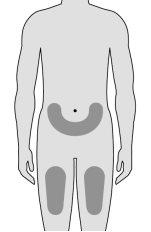

ФігураЄ
Невітерте ні сіпайте над зоною, яку ви тільки що очистили. Неторкайтесь місця введення ін'єкції знову, поки не закінчите введення ін'єкції. |
ФігураФ |
Введення дози | |
Не зніміть ковпачок, поки не будете готові вводити ін'єкцію. Неповертайте ковпачок на пігулку після його зняття.
Незгинайте ні не скручуйте ковпачок, поки тягніте його.
Неторкайтесь блакитного захисного кожуха для голки пальцями. Якщо ви це зробите, ви можете випадково запустити ін'єкцію та спричинити травму. |
ФігураГ |
|
ФігураХ |
Незмінюйте положення пігулки після початку ін'єкції. |
ФігураІ |
Невидаляйте пігулку, поки не пройшло принаймні 5 секунд. |
ФігураЙ |
Якщо ви продовжуєте бачити рештки ліків у вікні огляду, це може означати, що ви не отримали повну дозу. Якщо це відбувається або є щось інше, що вас турбує, зверніться до медичного працівника. Неторкайтесь блакитного захисного кожуха для голки після ін'єкції, оскільки це може спричинити травму. |
ФігураК |
Після ін'єкції | |
Нетертьте місце введення ін'єкції. |
ФігураЛ |
Кожна пігулка може бути використана тільки один раз. Неповертайте ковпачок на пігулку. Тримайте використану пігулку та її ковпачок поза зоною видимості та досягнення дітей.
Лікарський засіб та попередньо заповнена пігулка повинні бути видалені згідно з місцевими правилами.
Видаліть належним чином попередньо заповнені пігулки MetojectPEN, які просрочені, які вам більше не потрібні або які не можуть бути використані з будь-якої іншої причини. |
ФігураМ |
- Країна реєстрації
- Діючі речовини
- Потрібен рецептТак
- Виробник
- Інформація є довідковою і не є медичною порадою. Перед прийомом будь-яких препаратів обов'язково проконсультуйтеся з лікарем. Oladoctor не несе відповідальності за медичні рішення, прийняті на основі цього контенту.
- Альтернативи до МЕТОДЖЕКТ ПЕН 12,5 мг РОЗЧИН ДЛЯ ІН'ЄКЦІЙ У ПЕРЕДНАПОВНЕНІЙ ШПРИЦ-РУЧЦІФорма випуску: РОЗЧИН ДЛЯ ІН'ЄКЦІЙ, 10 мг/ 1 млДіючі речовини: methotrexateВиробник: Ebewe Pharma Ges.M.B.H. Nfg.KgПотрібен рецептФорма випуску: РОЗЧИН ДЛЯ ІН'ЄКЦІЙ, 15 мгДіючі речовини: methotrexateВиробник: Ebewe Pharma Ges.M.B.H. Nfg.KgПотрібен рецептФорма випуску: РОЗЧИН ДЛЯ ІН'ЄКЦІЙ, 20 мгДіючі речовини: methotrexateВиробник: Ebewe Pharma Ges.M.B.H. Nfg.KgПотрібен рецепт
Аналоги МЕТОДЖЕКТ ПЕН 12,5 мг РОЗЧИН ДЛЯ ІН'ЄКЦІЙ У ПЕРЕДНАПОВНЕНІЙ ШПРИЦ-РУЧЦІ в інших країнах
Найкращі аналоги з тією самою діючою речовиною та терапевтичним ефектом.
Аналог МЕТОДЖЕКТ ПЕН 12,5 мг РОЗЧИН ДЛЯ ІН'ЄКЦІЙ У ПЕРЕДНАПОВНЕНІЙ ШПРИЦ-РУЧЦІ у Польща
Аналог МЕТОДЖЕКТ ПЕН 12,5 мг РОЗЧИН ДЛЯ ІН'ЄКЦІЙ У ПЕРЕДНАПОВНЕНІЙ ШПРИЦ-РУЧЦІ у Україна
Лікарі онлайн щодо МЕТОДЖЕКТ ПЕН 12,5 мг РОЗЧИН ДЛЯ ІН'ЄКЦІЙ У ПЕРЕДНАПОВНЕНІЙ ШПРИЦ-РУЧЦІ
Консультація щодо дозування, побічних ефектів, взаємодій, протипоказань та поновлення рецепта на МЕТОДЖЕКТ ПЕН 12,5 мг РОЗЧИН ДЛЯ ІН'ЄКЦІЙ У ПЕРЕДНАПОВНЕНІЙ ШПРИЦ-РУЧЦІ – за рішенням лікаря та згідно з місцевими правилами.






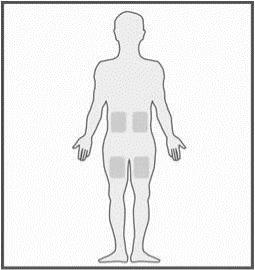

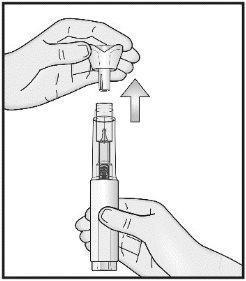
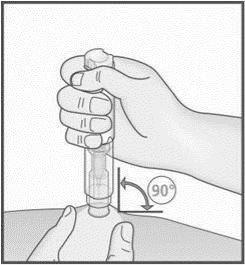
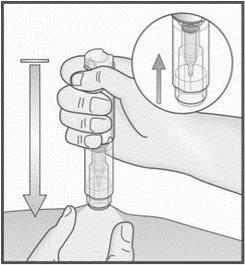

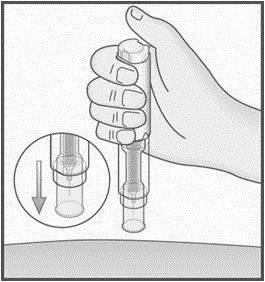



 (блокується після ін'єкції, голка знаходиться всередині)
(блокується після ін'єкції, голка знаходиться всередині)
